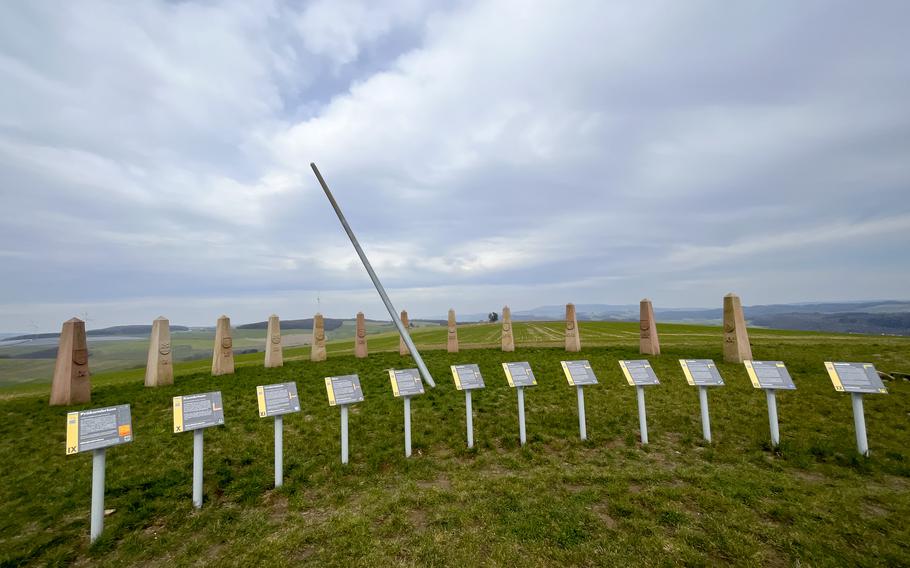
The sundial at the top of the Reiserberg hill near Heiligenmoschel, Germany, is the final station of a planet walk and offers superb views of the surrounding area. (J.P. Lawrence/Stars and Stripes)
It’s always fun when an afternoon hike shows you the insignificance of our tiny planet.
That happened recently when I journeyed to Heiligenmoschel, Germany, for a planet walk, a special type of educational trail with a solar system theme. This one is about a half-hour’s drive north of Kaiserslautern.
My trek began at the outer planets, and each step took me closer to the sun, at the top of a hill called the Reiserberg.
The 4-mile path takes about an hour to complete and goes up 524 feet. Stations along the route are named for planets and spaced at intervals scaled in proportion to the actual distance between celestial bodies.
I parked next to a restaurant in a former school. From there, I followed cute little signs attached to fenceposts, each emblazoned with a symbol of Saturn and an arrow pointing me to the planet walk.
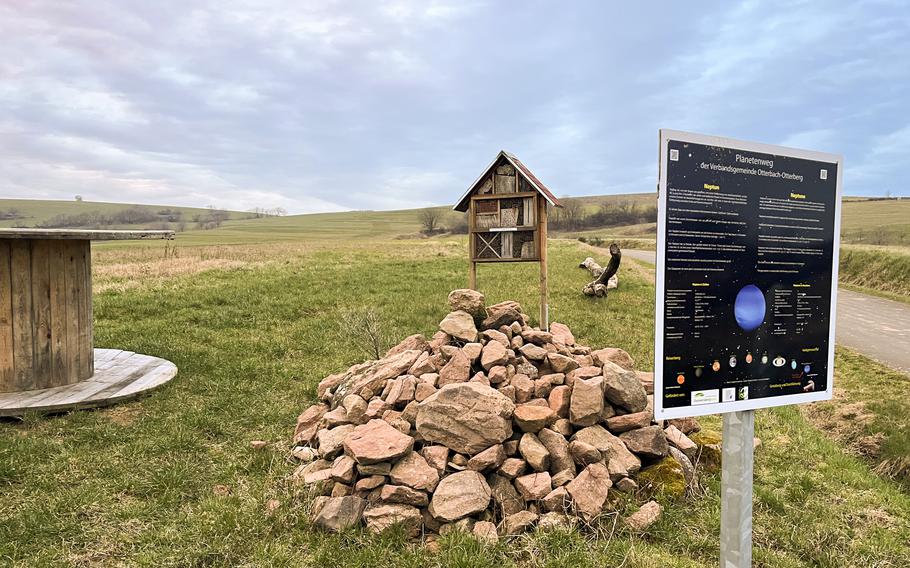
The path to the sundial in Heiligenmoschel, Germany, is a planet walk, during which hikers pass signposts with facts about the solar system at intervals proportionate to the distances between the planets. (J.P. Lawrence/Stars and Stripes)
I passed by a small parking area at the start of the hike and pretended that the big “P” on the sign stood for Pluto, which isn’t included because it’s not considered a planet anymore.
From the Neptune station, I could see the North Palatinate Uplands around me and Heiligenmoschel below. A sign listed facts about the planet, noting that it was discovered by German astronomer Johann Gottfried Galle, has 14 moons and is four times the size of Earth in terms of diameter.
As I would discover, this is the treatment each planet gets at the Heiligenmoschel pathway, and I found the presentation rather underwhelming. Showing representations of the solar system members at scale, as other planet walks such as the one in Washington, D.C. do, would have been more impressive.
At Uranus and Saturn, the signboards with their collection of facts citing NASA and Wikipedia held my interest for a minute or two, after a long trek to find them.
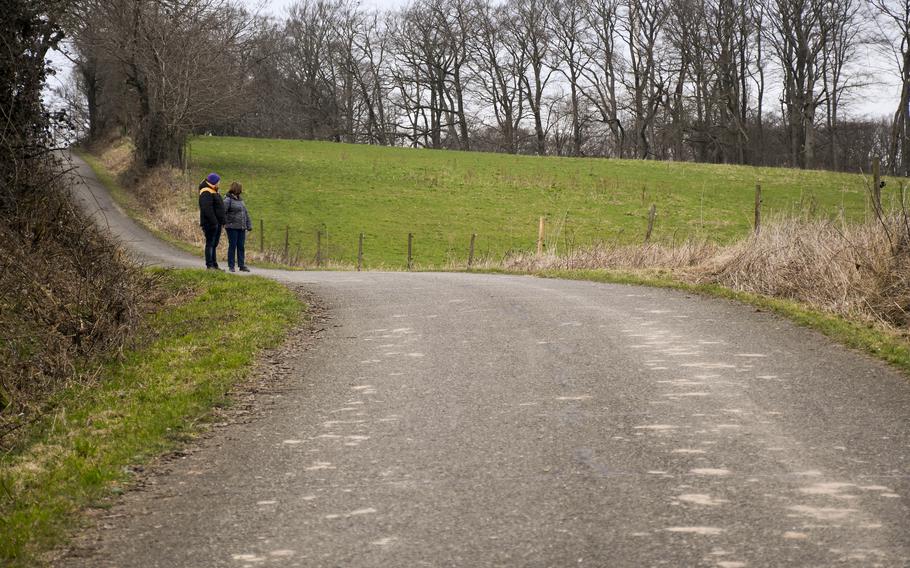
The planet walk leading to the Reiserberg sundial is about 4.3 miles long. It starts as a gravel path and eventually reaches the paved home stretch. (J.P. Lawrence/Stars and Stripes)
Another long hike through farm fields led me to Jupiter. The path becomes a gravel road as it nears the inner planets.
Even though I visited in March, I noticed that there’s very little shade, which could be a problem in the summer. But then again, space travel has always been treacherous.
Upon arrival at Jupiter, I saw a strange Stonehenge-like structure in the distance on the top of the hill, a set of obelisks rising mysteriously. The nature of the structure would be revealed to me at the end of the walk.
I made my way to the inner planets and then climbed the hill to reach the sun station, where I encountered a sundial. The walkable sculpture is made up of 12 obelisks surrounding a metal rod stretching diagonally toward the sky.
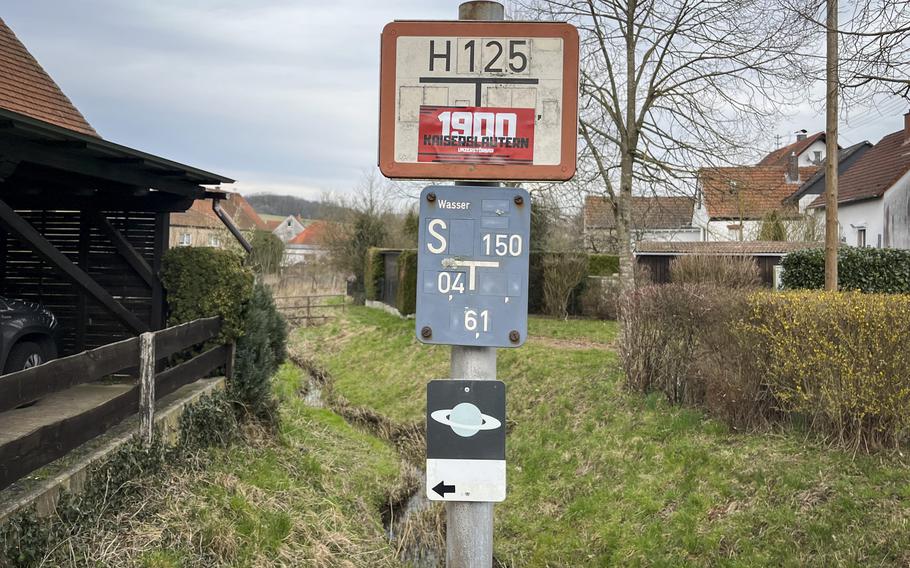
Signs depicting Saturn help hikers on the planet walk in Heiligenmoschel, Germany, find their way to the various stations, from Neptune to Mercury and then to a hilltop sundial. (J.P. Lawrence/Stars and Stripes)
The Reiserberg sundial sculpture opened in 2021. Into each obelisk is carved the coat of arms of one of the surrounding communities. Nearby benches afford hikers a much-appreciated rest and a chance to take in the bucolic surroundings.
Each step of the route impresses upon you the immensity of the universe, the minuteness of Earth and the modesty of humanity’s ventures into the cosmic void.
But on the downhill walk, my musings turned more mundane. Instead of the solar system, I was considering what my options were for dinner in Heiligenmoschel.
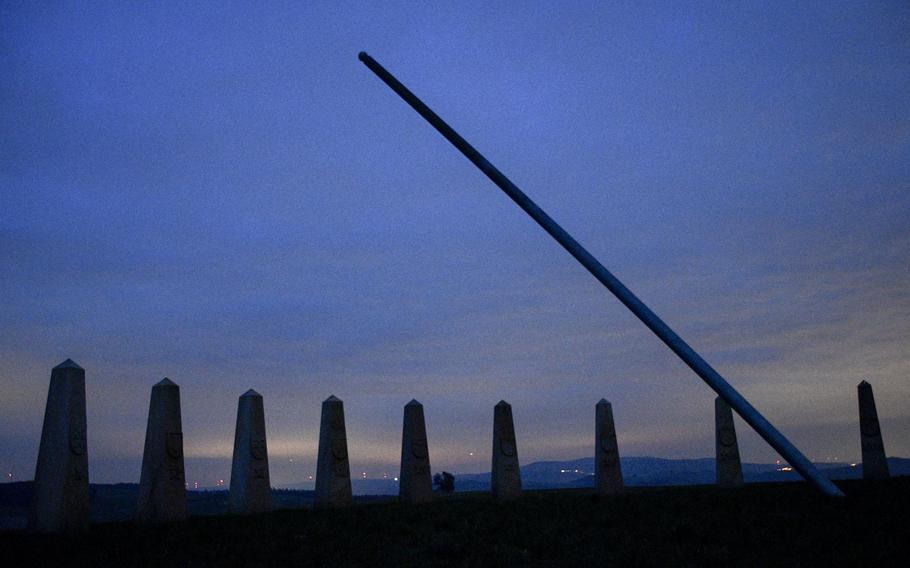
The Reiserberg sundial in Heiligenmoschel, Germany. Each obelisk is adorned with the coat of arms of one of the surrounding communities. (J.P. Lawrence/Stars and Stripes)
Directions: The Neptune station on the planet walk shows up as Planetenweg-Neptun on Google Maps at Bergstrasse in Heiligenmoschel, Germany. Another option is to park near the Alt Schul Gaststaette restaurant, where there is street parking, and then follow signs to the pathway.
Hours: Trails are open 24 hours year-round.
Cost: Free
Information: www.otterbach-otterberg.de/tourismus-freizeit/sonnenuhr/